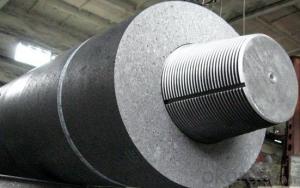Welding, the art of fusing metals together, has been around for centuries. But it wasn’t until the 20th century that a significant breakthrough occurred in the form of graphite electrodes. This seemingly simple addition revolutionized the welding process, making it more efficient, versatile, and accessible to a wider range of professionals and enthusiasts.
Graphite, a naturally occurring form of carbon, has been prized for its unique properties for centuries. It’s lightweight, durable, and has a high resistance to heat and electricity. These characteristics make it an ideal material for various applications, including in the field of welding.
Before the introduction of graphite electrodes, welding was a laborious and time-consuming process. Welders had to rely on other materials, such as copper or iron, which were not as effective or efficient. The heat generated during the welding process would often damage these materials, leading to a lower quality weld and more time spent on repairs and maintenance.
But with the advent of graphite electrodes, all of that changed. The high heat resistance of graphite allowed for a more controlled and precise welding process. This meant that welders could work faster and produce higher quality results with less material waste.
One of the most significant advantages of graphite electrodes is their versatility. They can be used in a wide range of welding processes, including arc welding, resistance welding, and plasma welding. This has opened up new possibilities for welders, allowing them to tackle a variety of projects that were previously difficult or impossible to achieve.
Moreover, the use of graphite electrodes has also improved the safety of the welding process. The reduced heat and electricity resistance has minimized the risk of electrical shock and other hazards associated with traditional welding methods.
As the demand for welding has grown, so too has the need for more advanced and specialized graphite electrodes. Manufacturers have responded by developing new types of electrodes with specific properties tailored to different welding applications. For example, some electrodes are designed to produce a cleaner weld with less spatter, while others are formulated to withstand higher temperatures for more demanding jobs.
The evolution of graphite electrodes has not only impacted the welding industry but has also had a ripple effect on other industries as well. From aerospace and automotive to construction and manufacturing, the use of graphite electrodes has improved the quality and efficiency of countless products and processes.
In recent years, there has been a push towards more sustainable and environmentally friendly practices in all industries, including welding. Graphite electrodes have played a role in this movement by reducing the environmental impact of welding operations. The reduced waste and energy consumption associated with the use of graphite electrodes have made them a popular choice for those looking to minimize their ecological footprint.
The future of welding looks bright, and graphite electrodes will undoubtedly continue to play a central role in its development. As technology advances and new materials and techniques are discovered, the potential applications for graphite electrodes will only continue to expand.
In conclusion, the introduction of graphite electrodes has been a game-changer for the welding industry. Their unique properties have transformed the way we approach welding, making it more efficient, versatile, and safe. As we look to the future, it’s clear that the evolution of graphite electrodes will continue to shape the world of welding and beyond.

